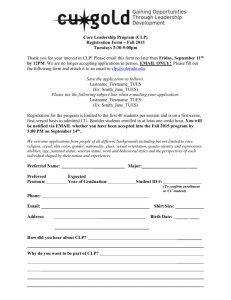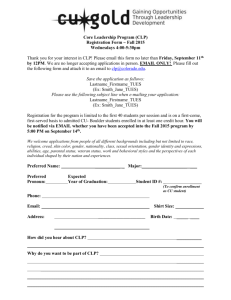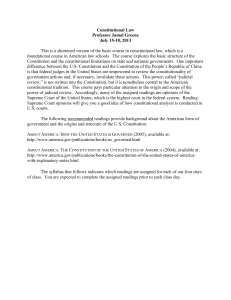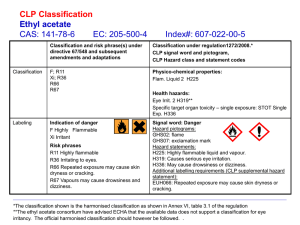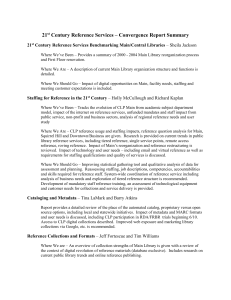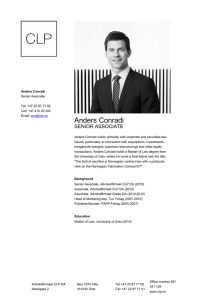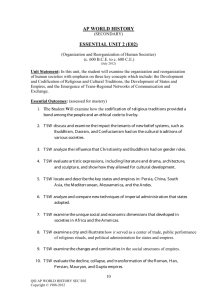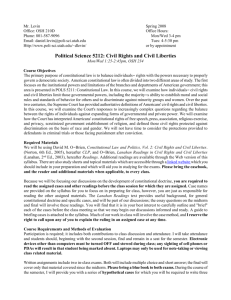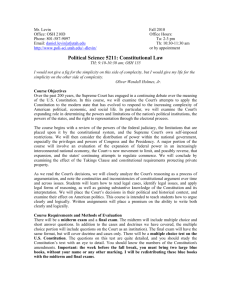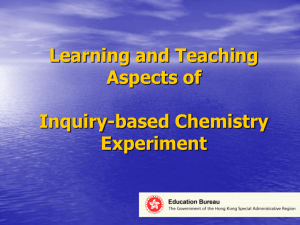Constitutional Law
advertisement
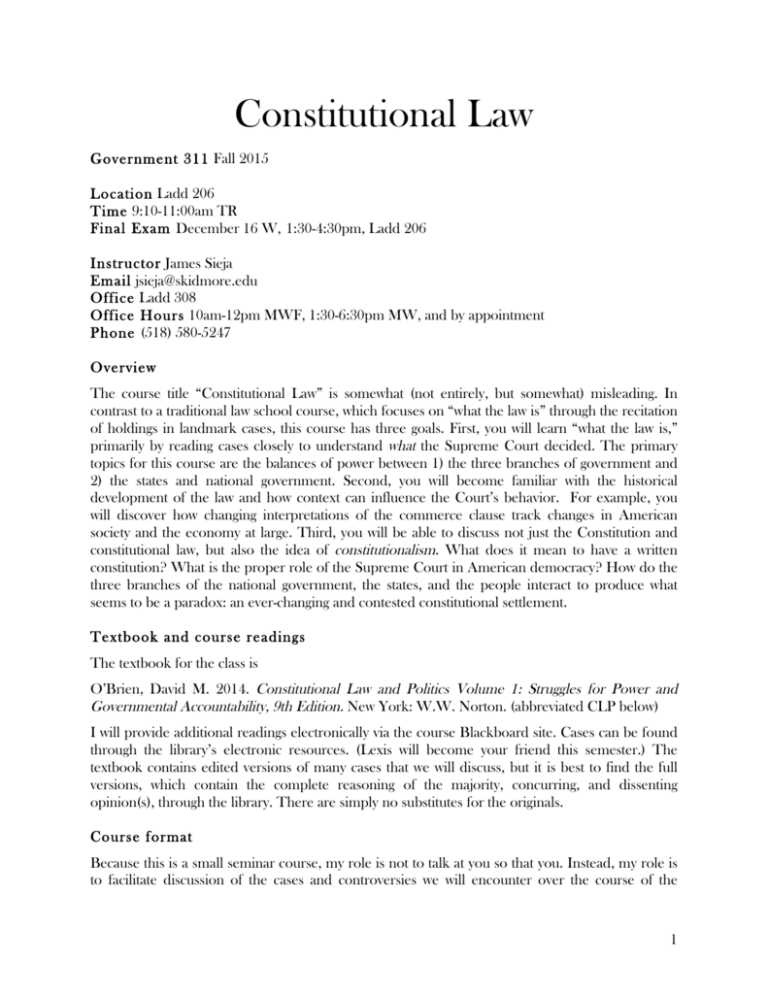
Constitutional Law Government 311 Fall 2015 Location Ladd 206 Time 9:10-11:00am TR Final Exam December 16 W, 1:30-4:30pm, Ladd 206 Instructor James Sieja Email jsieja@skidmore.edu Office Ladd 308 Office Hours 10am-12pm MWF, 1:30-6:30pm MW, and by appointment Phone (518) 580-5247 Overview The course title “Constitutional Law” is somewhat (not entirely, but somewhat) misleading. In contrast to a traditional law school course, which focuses on “what the law is” through the recitation of holdings in landmark cases, this course has three goals. First, you will learn “what the law is,” primarily by reading cases closely to understand what the Supreme Court decided. The primary topics for this course are the balances of power between 1) the three branches of government and 2) the states and national government. Second, you will become familiar with the historical development of the law and how context can influence the Court’s behavior. For example, you will discover how changing interpretations of the commerce clause track changes in American society and the economy at large. Third, you will be able to discuss not just the Constitution and constitutional law, but also the idea of constitutionalism. What does it mean to have a written constitution? What is the proper role of the Supreme Court in American democracy? How do the three branches of the national government, the states, and the people interact to produce what seems to be a paradox: an ever-changing and contested constitutional settlement. Textbook and course readings The textbook for the class is O’Brien, David M. 2014. Constitutional Law and Politics Volume 1: Struggles for Power and Governmental Accountability, 9th Edition. New York: W.W. Norton. (abbreviated CLP below) I will provide additional readings electronically via the course Blackboard site. Cases can be found through the library’s electronic resources. (Lexis will become your friend this semester.) The textbook contains edited versions of many cases that we will discuss, but it is best to find the full versions, which contain the complete reasoning of the majority, concurring, and dissenting opinion(s), through the library. There are simply no substitutes for the originals. Course format Because this is a small seminar course, my role is not to talk at you so that you. Instead, my role is to facilitate discussion of the cases and controversies we will encounter over the course of the 1 semester. Coincidentally, you have the same role. It is imperative, then, that every member of the class comes prepared (i.e., having read the cases and text carefully and critically) to discuss the day’s topic. The success of the class depends on your dedication to preparation and engagement. Ask questions. Argue. Challenge. Probe. Do all of these honestly (see below), and we will have a successful semester. Attendance and participation are mandatory. (Note: It is not possible to do well on the latter if you do not do well on the former.) Please let me know before class if you must miss. There is no acceptable number of unexcused absences. After one unexcused absence, each subsequent unexcused absence will lower your final letter grade by a half-step (e.g., a B+ becomes a B at two unexcused absences, a B- at three, etc.). Regardless of the reason for your absence, you are responsible for all material covered in class that day . Course requirements and grading Midterm exam (20%), final exam (25%), attendance and participation (15%), hypothetical (10%), and case briefs (30% - 6 @ 5% each). Barring clerical error (e.g., I added up the points incorrectly or entered the incorrect number on Blackboard), all grades are final. I am always willing to talk with you about exam and written assignment grades and suggest ways to improve. But, I will not bargain over grades or points, nor will there be extra credit opportunities. I will employ a standard grade scale: A+ (100-97), A (97-93), A- (93-90), B+ (90-87), B (87-83), B(83-80), C+ (80-77), C (77-73), C- (73-70), D+ (70-67), D (67-60), F (below 60). I will not round grades as a matter of course; however, your exceptional effort in one or more elements of the final grade may be considered a plus factor if your grade is on the borderline. There is no curve in this course, though I reserve the right to adjust grade cutoffs if necessary. The adjustments will only work neutrally or in your favor, if applied. Exams We will have one midterm exam on November 3. The final will be comprehensive with an emphasis on the last half of the course. The exams will have a combination of multiple choice, short answer, and essay questions. Hypothetical For this assignment, you will use legal principles and cases covered in the course to analyze a fictional case in six to eight pages. Imagine you are a lawyer for a client involved in a constitutional case. You will need to prepare a document that explains to the court the important issues in the case, the relevant precedents, and why your client should win. You should raise counter-arguments to your position and address them forthrightly as well. The hypothetical will be assigned October 20 and be due a week later, in hard copy at the start of class. Case briefs Briefing cases is not only an essential skill for law school-bound students, but also an especially useful learning tool and study aid. In the introductory section of the course, you will read a short section of CLP on briefing cases. During each of the six sections with cases (II through VII under 2 “Topic and readings”), you are required to prepare a full brief on one case listed on the syllabus. You must turn the brief in before we discuss the case in class. The cases for each class are set out in the syllabus. Expectations and technology policy I expect this class, the readings, making an argument, and getting involved to be the thing you care about most in the world during the 160 minutes we meet each week. I expect you to come to class at least having read the material for the week, even if you haven’t fully understood it or have an opinion on it yet. That’s why we have class – to work through those issues. But, understanding and evaluation of the material will be difficult if you have not done the first part: reading them yourself. I expect you to bring assigned reading material to class with you. Many of the readings are on the course Blackboard site or accessible through the library’s databases. For this reason, if you do not print out the readings, you should bring a laptop with which you can access them. Accessing readings and note-taking are the only regularly authorized uses of an electronic device during class. Please turn off all cell phones, etc., and during class, place them on the table in front of you. I will silently assess penalties, which will negatively affect your attendance and participation grades, if I suspect that you are not fully present in class at any point. As someone (the internet claims Thomas Jefferson, but I’m dubious) once said, “If you’re here, be here.” Disability accommodations Please inform me during the first two weeks of classes if you need any accommodations in the curriculum, instruction, or assessments of this course to enable you to participate fully. Confidentiality of the shared information will be strictly maintained. We will work with Meg Hegener, Coordinator of Student Access Services, if accommodations require such assistance. Academic honesty I expect everyone to conduct themselves with integrity and honesty in this class. There are two facets to this expectation. First, all of the work you do in this class will be your own. Don’t cheat. Don’t plagiarize. Don’t take short cuts. If I catch you engaging in academic dishonesty, you will, at the very least, receive an F for that portion of the course (e.g., if you plagiarize on one case brief, you will max out at 18% out of 30%). That is the minimum penalty. It gets worse from there based on the intent and egregiousness of the dishonesty. Again, don’t cheat. Second, I expect everyone to be intellectually honest. This means listening attentively to other’s comments and questions and responding appropriately. Some of the material in the class is controversial (e.g., the proper way to interpret the Constitution), and an intellectually vibrant community like Skidmore ought to entertain opinions on most any side of a controversy. Moreover, a liberally educated person ought to be able to articulate fearlessly the “best case” for any legitimate proposition. So, we will not resort to ad hominem attacks, shut-down-by-slogan, or straw person arguments. (Ok, I might do the straw person argument sometimes, but only for effect.) Believe in the rightness of your argument; be prepared to challenge both yourself and others; and be open to changing your mind. 3 Topics and readings Please note that the readings are subject to change. I will let you know throughout the semester where we are in the schedule and where we are going. I. Introduction and Foundations of Judicial Power (September 10, 15, & 17) CLP, pp. 1107-1112 Kerr, “How to Read a Legal Opinion” The Constitution and its Amendments (pp.1-21 in CLP) Hamilton, The Federalist Nos. 78 & 81 Brutus, The Anti-Federalist Papers, Nos. 11-13 McCloskey, The American Supreme Court, Chapters 1 & 2 CLP, pp. 68-106 II. The Judicial Power and Its Restraints (September 22, 24, & 29, October 1) Judicial Review CLP, pp. 23-67 Marbury v. Madison; Eakin v. Raub; Cooper v. Aaron Restraints CLP, Chapter 2 Sheldon v. Sill; Ex Parte McCardle Frothingham v. Mellon; Flast v. Cohen; Lujan v. Defenders of Wildlife Luther v. Borden; Baker v. Carr; Nixon v. United States III. Congressional Powers (October 6, 8, 13, 15, & 20) Non-legislative Powers CLP, Chapter 5 Powell v. McCormack; U.S. Term Limits, Inc. v. Thornton Legislative Powers: Commerce Clause, Taxing, and Spending CLP, Chapter 6 McCloskey, The American Supreme Court, Chapters 5-6 Gillman, The Constitution Besieged, Introduction and Afterword McCulloch v. Maryland; Gibbons v. Ogden; United States v. E.C. Knight; Hammer v. Dagenhart; Schechter Poultry v. United States NLRB v. Jones & Laughlin Steel; Wickard v. Filburn; Heart of Atlanta Motel v. United States/Katzenbach v. McClung United States v. Lopez; United States v. Morrison; Gonzalez v. Raich; NFIB v. Sebelius Pollock v. Farmer’s Loan & Trust; McCray v. United States; Bailey v. Drexel Furniture; Steward Machine Co. v. Davis; South Dakota v. Dole; NFIB v. Sebelius Hypothetical assigned October 20. Due in class October 27. IV. The Domestic Presidency (October 22, 27, & 29) CLP, Chapter 4 In re Neagle; Youngstown Sheet and Tube Co. v. Sawyer Clinton v. New York; Myers v. United States; Humphrey’s Executor v. United States Morrison v. Olson; Bowsher v. Synar Midterm Exam 1: In class, November 3 4 V. Executive Power in War and Foreign Affairs (November 5, 10, & 12) CLP, Chapter 3 Schmitt, “Washington’s Proclamation of Neutrality” War Powers Resolution Fisher, “Judicial Review of the War Power” United States v. Curtiss-Wright Co.; Dames & Moore v. Regan; Missouri v. Holland, United States v. Pink; Medellin v. Texas Ex parte Milligan; Korematsu v. United States; Hamdi v. Rumsfeld; Rasul v. Bush VI. Federalism (November 17, 19, & 24) CLP, Chapter 7 Cooley v. Board of Wardens; Southern Pacific Co. v. Arizona; Bibb v. Navajo Freight Lines; Maine v. Taylor; Pennsylvania v. Nelson Garcia v. SAMTA; New York v. United States; Printz v. United States; Seminole Tribe of Florida v. Florida; Alden v. Maine; NDHR v. Hibbs Martin v. Hunter’s Lessee; Cooper v. Aaron; Younger v. Harris; Stone v. Powell; U.S. v. Windsor VII. Back to the Legislature: Economic Rights (November 17, 19, & 24) CLP, Chapter 9 Fletcher v. Peck; Dartmouth College v. Woodward; Charles River Bridge Co. v. Warren Bridge Co.; HBLA v. Blaisdell; United States Trust Company v. New Jersey The Slaughterhouse Cases; Munn v. Illinois; Lochner v. New York; Muller v. Oregon; West Coast Hotel v. Parrish Kelo v. New London; Hawaii Housing Authority v. Midkiff; Lucas v. South Carolina Coastal Council VIII. Judicial Power Revisited (December 8 & 10) Dahl, Robert A. 1957. “Decision-Making in a Democracy: The Supreme Court as a National Policy-Maker” Journal of Public Law 6: 279-295 Whittington, Political Foundations of Judicial Supremacy, Chapters 5 & 6 Bickel, The Least Dangerous Branch, Chapter 4 Friedman, The Will of the People, “Conclusion: What History Teaches” Tushnet, Taking the Constitution Away from the Courts, Chapters 1, 6, & 7 Final Exam: December 16, 1:30-4:30pm (comprehensive, with emphasis on the last third of the course) 5
